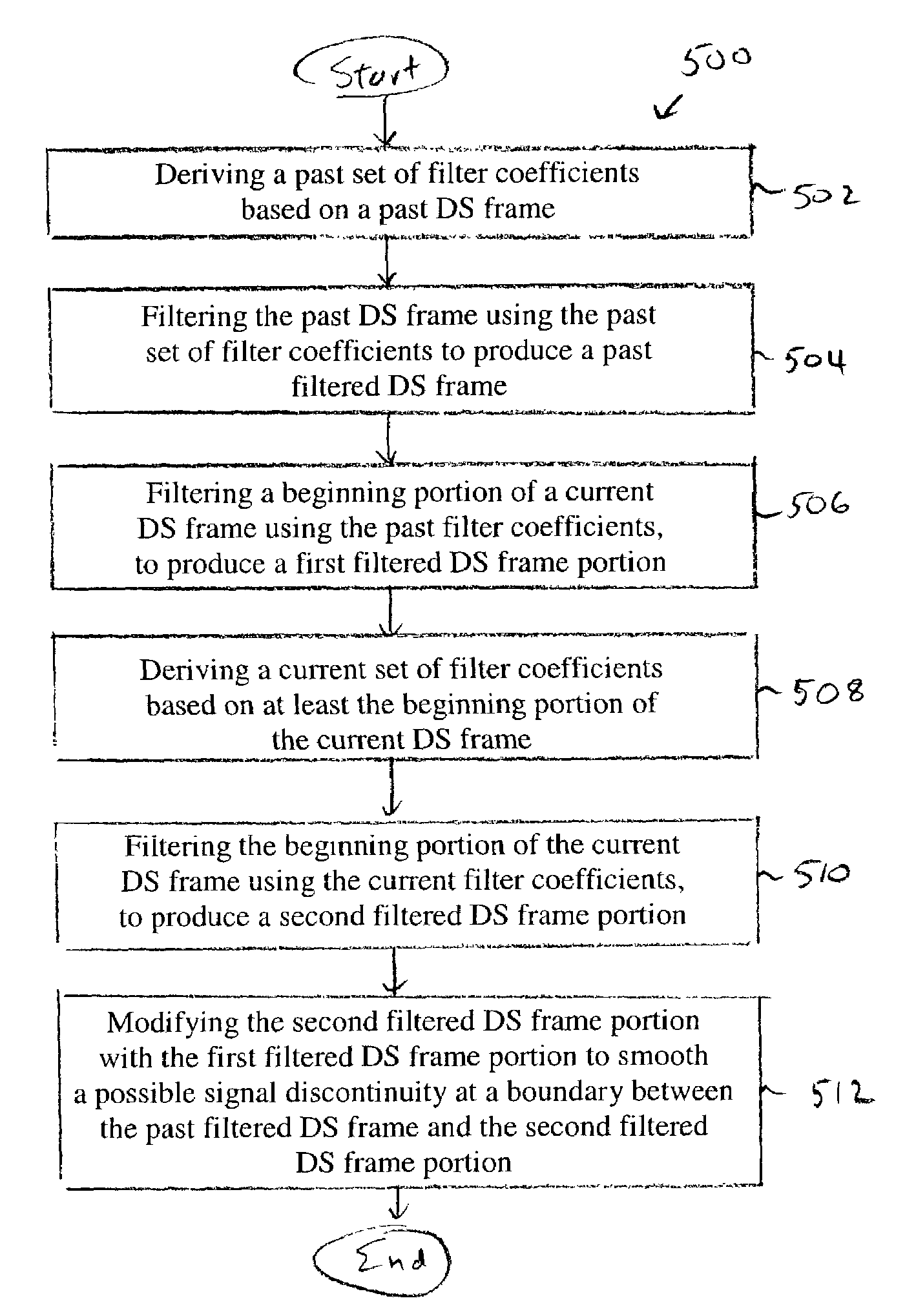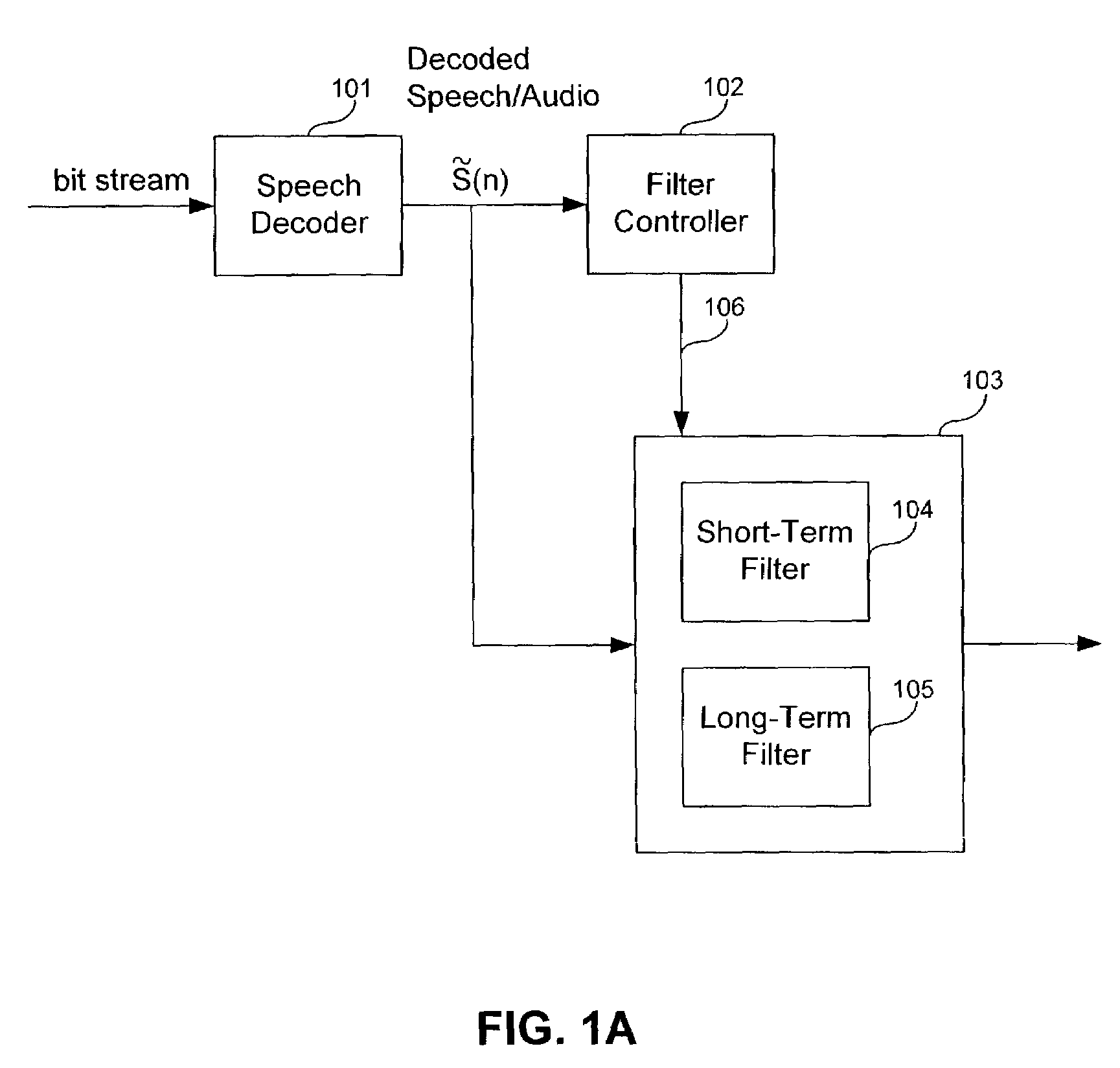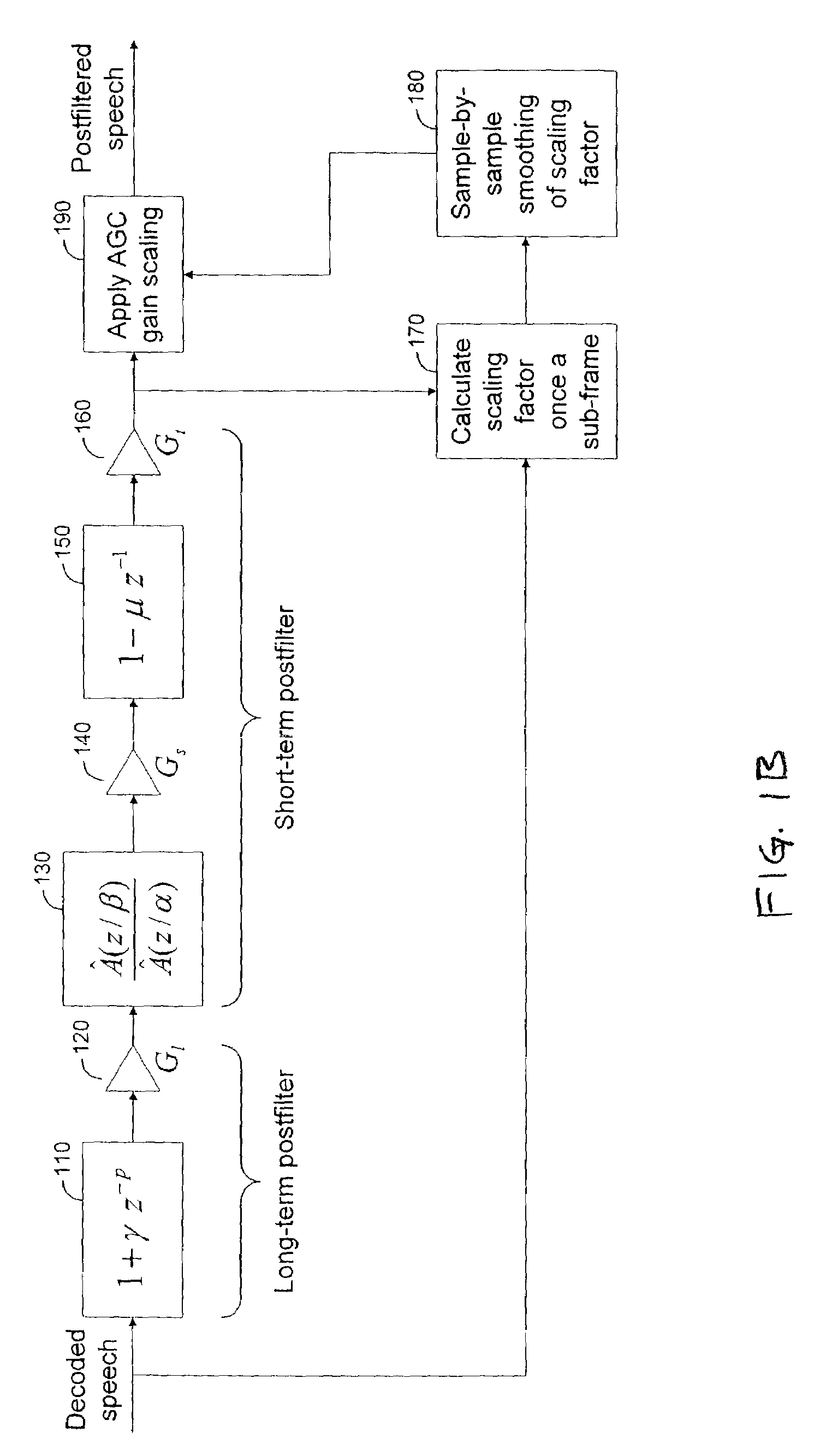Method and apparatus to eliminate discontinuities in adaptively filtered signals
a discontinuity and adaptive filtering technology, applied in the field of filtering signals, can solve the problems of affecting the quality of postfiltered speech, requiring relatively high computational complexity, and undesirable buffering delay, and achieves the effects of reducing computational complexity and buffering delay, improving decoded speech quality, and simple filter structur
- Summary
- Abstract
- Description
- Claims
- Application Information
AI Technical Summary
Benefits of technology
Problems solved by technology
Method used
Image
Examples
Embodiment Construction
[0028]In speech coding, the speech signal is typically encoded and decoded frame by frame, where each frame has a fixed length somewhere between 5 ms to 40 ms. In predictive coding of speech, each frame is often further divided into equal-length sub-frames, with each sub-frame typically lasting somewhere between 1 and 10 ms. Most adaptive postfilters are adapted sub-frame by sub-frame. That is, the coefficients and parameters of the postfilter are updated only once a sub-frame, and are held constant within each sub-frame. This is true for the conventional adaptive postfilter and the present invention described below.
1. Postfilter System Overview
[0029]FIG. 1A is block diagram of an example postfilter system for processing speech and / or audio related signals, according to an embodiment of the present invention. The system includes a speech decoder 101 (which forms no part of the present invention), a filter controller 102, and an adaptive postfilter 103 (also referred to as a filter 1...
PUM
 Login to View More
Login to View More Abstract
Description
Claims
Application Information
 Login to View More
Login to View More - R&D
- Intellectual Property
- Life Sciences
- Materials
- Tech Scout
- Unparalleled Data Quality
- Higher Quality Content
- 60% Fewer Hallucinations
Browse by: Latest US Patents, China's latest patents, Technical Efficacy Thesaurus, Application Domain, Technology Topic, Popular Technical Reports.
© 2025 PatSnap. All rights reserved.Legal|Privacy policy|Modern Slavery Act Transparency Statement|Sitemap|About US| Contact US: help@patsnap.com



